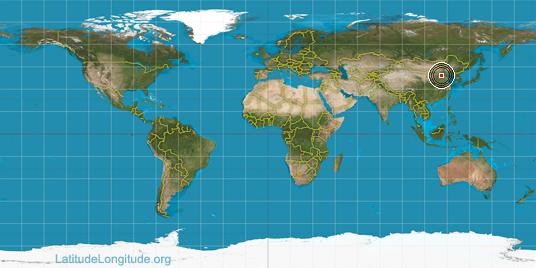
Unveiling Beijing: Coordinates, Culture, and Captivating Experiences
Beijing, the vibrant capital of China, stands as a testament to the country's rich history, cultural dynamism, and modern aspirations. Its strategic location in northeastern China has played a pivotal role in shaping its destiny, attracting emperors, scholars, and travelers for centuries.
Pinpointing Beijing: Unveiling the Geographic Coordinates
To pinpoint this metropolis on the world map, we turn to its precise geographical coordinates:
| Coordinate | Value |
|---|---|
| Latitude | 39° 55' 0.0048'' N |
| Longitude | 116° 22' 59.9916'' E |
These coordinates place Beijing in the North China Plain, a region known for its fertile land and historical significance. The city's latitude positions it in the temperate zone, characterized by distinct seasons, while its longitude places it in the Eastern Hemisphere, eight hours ahead of Coordinated Universal Time (UTC).
Beyond Coordinates: Experiencing Beijing's Essence
While coordinates provide a precise location, they merely scratch the surface of what makes Beijing an enthralling destination. The city's allure lies in its captivating blend of ancient wonders and modern marvels, evident in its imperial palaces, bustling markets, and cutting-edge architecture.
Imperial Grandeur and Historical Treasures:
No trip to Beijing is complete without immersing oneself in its imperial past. The Forbidden City, a UNESCO World Heritage site, stands as a testament to the grandeur of the Ming and Qing dynasties. Its sprawling complex of palaces, courtyards, and gardens offers a glimpse into the lives of emperors and their courts.
Cultural Immersion and Culinary Delights:
Beijing's cultural tapestry is woven with traditions passed down through generations. Explore the city's ancient hutongs, narrow alleys lined with traditional courtyard houses, to witness local life unfold. Indulge in the city's culinary scene, renowned for its Peking duck, savory dumplings, and flavorful street food.
Modern Marvels and Urban Energy:
Beijing's skyline is punctuated by modern architectural marvels, including the iconic Bird's Nest stadium and the futuristic CCTV Headquarters building. The city's vibrant arts scene, bustling shopping districts, and thriving nightlife reflect its modern dynamism.
References
- UNESCO World Heritage Centre. (n.d.). Imperial Palaces of the Ming and Qing Dynasties in Beijing and Shenyang. Retrieved from https://whc.unesco.org/en/list/439/
Frequently Asked Questions
Q1: What is the best time to visit Beijing?
A1: Spring (April-May) and autumn (September-October) are generally considered the best times to visit Beijing, offering pleasant weather and colorful scenery. Summer (June-August) can be hot and humid, while winter (November-March) can be cold and dry.
Q2: How do I get around Beijing?
A2: Beijing boasts an extensive and efficient public transportation system, including a subway, buses, and taxis. The city is also walkable in many areas.
Q3: What are some souvenirs to buy in Beijing?
A3: Popular souvenirs from Beijing include silk products, cloisonné enamelware, traditional Chinese paintings, and tea.
More article references: coordinates beijing china